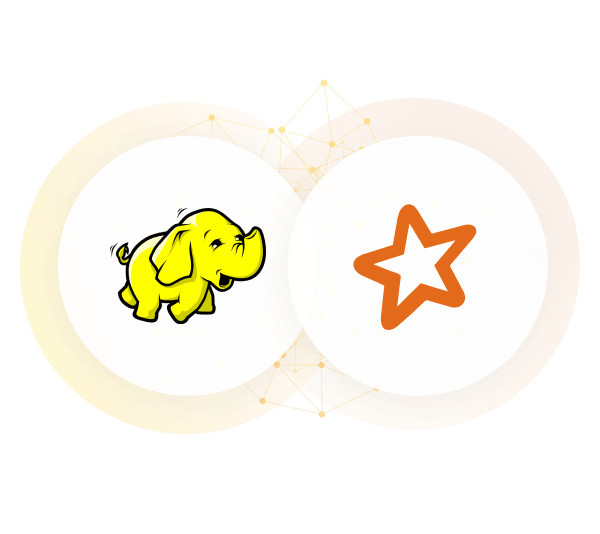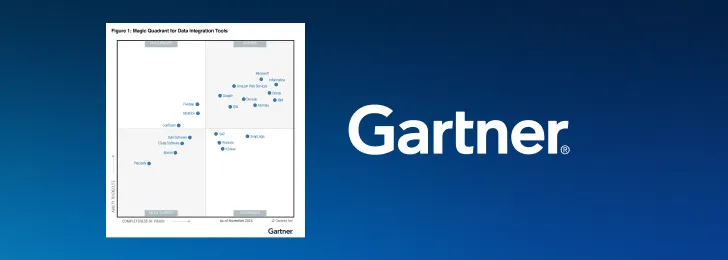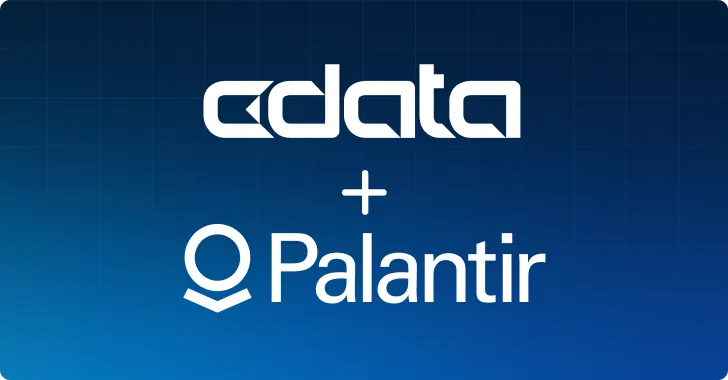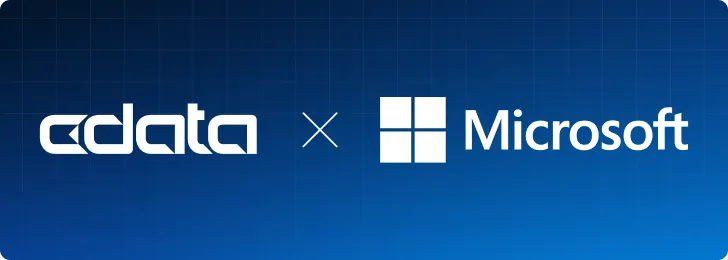
For organizations looking to process and move large volumes of data, two powerful Apache Software solutions stand out: Hadoop and Spark. These frameworks have revolutionized how organizations handle massive datasets, enabling efficient storage, processing, and analysis. But with two such powerful solutions, choosing the right one can be daunting. In this article, we delve into the differences between Hadoop and Spark, examining their unique features, performance characteristics, and ideal use cases. Whether you’re a data scientist, engineer, or business analyst, understanding these platforms is essential for unlocking valuable insights from large data sets across various industries.
Let’s explore the world of big data analytics and discover how Hadoop and Spark can transform your data-driven endeavors.
What is Hadoop and Spark?
Apache Hadoop and Apache Spark are two open-source frameworks specifically crafted for handling and analyzing vast volumes of data for analytics. They are distributed systems that can process data at scale and recover from failure if data processing is interrupted. Moreover, they can be effectively combined to achieve comprehensive data analytics objectives.
Both Hadoop and Spark operate across multiple computers, storing and processing data in a distributed manner. Their architecture relies on software modules that effectively interact and collaborate, ensuring robustness and fault tolerance. Whether you’re dealing with structured or unstructured data, these frameworks offer powerful solutions for managing and extracting insights from your data-driven processes.
Apache Spark vs. Hadoop
Here is a list of 5 key aspects that differentiate Apache Spark from Apache Hadoop:
|
Feature
|
Hadoop
|
Spark
|
|
Performance
|
Disk-based framework; slower due to disk I/O
|
Memory-based framework; faster execution times; ideal for iterative algorithms, real-time analytics, queries
|
|
Architecture
|
Hadoop File System (HDFS), Yet Another Resource Negotiator (YARN)
|
Resilient Distributed Datasets (RDDs), Spark SQL, Spark Streaming, MLlib; can run independently or alongside Hadoop
|
|
Security
|
Basic authentication, and authorization (Kerberos, Access Control Lists (ACLs))
|
Inherits Hadoop security; offers additional fine-grained access controls, encryption, role-based access
|
|
Data Processing
|
Batch processing, suitable for historical analysis
|
Batch processing, real-time stream processing; supports iterative algorithms, machine learning, graph processing
|
|
Costs
|
Requires substantial storage infrastructure (disk-based)
|
Potentially lower infrastructure costs due to in-memory processing; may require more memory resources
|
In summary, while Hadoop and Spark share similarities as distributed systems, their architectural differences, performance characteristics, security features, data processing capabilities, and cost implications make them distinct choices for big data analytics.
When to use Spark vs. Hadoop: Use cases
Spark's speed and real-time capabilities make it the go-to choice for demanding tasks like machine learning and live data analysis. However, when tackling colossal datasets on a budget or for non-time-sensitive analysis, Hadoop's scalable and cost-effective nature steals the show. Let's try to understand the core use cases of each framework:
Apache Spark use cases:
- Real-time stream data analysis: Spark excels in processing real-time streaming data. You can use it for monitoring social media feeds, financial transactions, sensor data, or log streams.
- Machine learning applications: Spark’s MLlib offers a rich set of machine learning algorithms. It can be used for building recommendation systems, fraud detection models, natural language processing (NLP), and predictive analytics. Its scalability and ease of integration make it ideal for ML pipelines.
- Interactive data exploration: Spark's SQL-like interfaces helps you uncover hidden patterns within your data quickly for interactive exploration and rapid prototyping.
- Fraud detection & anomaly identification: Suspicious activities can be identified in real-time with Spark's streaming capabilities, enhancing system security, and preventing financial losses.
- Personalized recommendations: Spark's ability to process large datasets efficiently makes it ideal for building accurate and dynamic recommendation systems in e-commerce or entertainment platforms.
Apache Hadoop use cases:
- Handling large datasets: When dealing with massive datasets that exceed available memory capacity, Hadoop’s HDFS shines. You can use it for storing and processing historical data, logs, and archives.
- Data warehousing & data lakes: Hadoop's HDFS provides scalable storage for building robust data warehouses and lakes.
- Log analysis & extract-transform-load (ETL): With Hadoop's distributed capabilities, you can process, transform, and load massive log files from various sources efficiently.
- Big data on a budget: While Spark requires more memory, Hadoop leverages cost-effective hard disks for storage, making it a budget-friendly choice for large-scale data storage and processing.
- Scientific data analysis: You can analyze climate data, genetic sequences, or astronomical observations on large, distributed clusters using Hadoop's parallel processing power.
Hadoop vs. Spark: How to choose and which one to use
The allure of big data promises valuable insights, but navigating the world of tools and frameworks can be daunting. Apache Hadoop and Apache Spark, two of the most prominent players in this field, make it difficult when deciding which one reigns supreme. However, the truth is, there's no "one size fits all" answer. The optimal choice hinges on your specific business needs and priorities. Some of them can be:
-
Identifying your data processing needs
Hadoop stands out for its proficiency in managing extensive datasets through distributed storage and batch processing, making it well-suited for tasks like historical analysis, ETL jobs, and non-time-sensitive operations. Examples include large-scale data warehousing and cost-effective log analysis. On the other hand, if you prioritize real-time insights, rapid iterative algorithms, and interactive data exploration, Spark takes the lead with its in-memory computing and remarkable speed. Tasks such as fraud detection, personalized recommendations, and machine learning become seamlessly efficient.
-
Evaluating existing infrastructure and compatibility
Before diving into the Spark vs. Hadoop debate, take a moment to assess your current infrastructure. If you already have a robust disk-based storage system and a well-established Hadoop ecosystem, integrating Spark can be a smooth transition. The beauty lies in Spark's flexibility to run on top of various resource management systems like Hadoop YARN, Apache Mesos, or Kubernetes. This seamless integration allows you to leverage the strengths of both frameworks: harnessing Hadoop's cost-effective storage for historical data while utilizing Spark's in-memory processing power for real-time analysis and machine learning tasks.
-
Integration capabilities with other big data tools
Spark demonstrates its versatility by actively interacting with various data sources and smoothly integrating with other tools. Evaluate its compatibility with your overall architecture thoughtfully. Conversely, if your infrastructure centers around tools such as Hive, Pig, and HBase within the established Hadoop ecosystem, opting for Hadoop may offer a more streamlined approach.
-
Aligning with long-term project goals and scaling needs
Anticipate the expansion of your project in scope and complexity by evaluating both scalability and fault tolerance. Spark offers incredible versatility across various tasks, and Hadoop, with its robust architecture designed for massive datasets, can contribute to your evolving needs. Keep in mind that scalability enables the seamless addition of resources as your data grows, and fault tolerance ensures uninterrupted operation, even in the event of hardware failures.
The CData difference
CData truly unlocks the potential of both Spark and Hadoop (HDFS) by allowing you to work data from those frameworks wherever you want. With CData Drivers and Connectors, you get instant access to the data behind your Spark and Hadoop instance from any BI, reporting, or analytics tool and even from custom applications.
Additionally, CData's suite of 3o0+ JDBC drivers can be used to access live data from every SaaS, big data, and NoSQL source, extending Apache Spark's connectivity reach to all of your data.
As always, our support team is ready to answer any questions. Have you joined the CData Community? Ask questions, get answers, and share your knowledge in CData connectivity tools. Join us!
Try CData today
E\xpand integrations with both Spark and Hadoop with a free 30-day trial of CData Drivers and Connectors.





